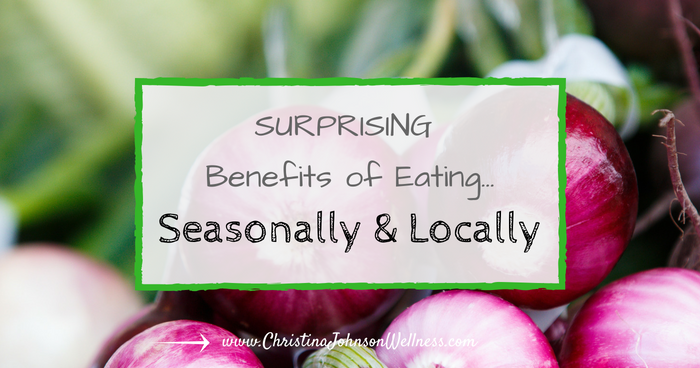Have you ever considered that not all that long ago, our ancestors had to eat food that was grown, hunted, or foraged locally? They didn’t have grapes imported from Brazil in January or avocados shipped from Mexico any time of the year.
While I’m often thankful for access to a variety of produce throughout the year…I mean, how could I live without avocados in the winter…it does come with drawbacks.
Food Miles
Are you familiar with the concept of “food miles”? Food miles measure how far food travels from where it was produced and harvested to where the consumer purchases it.
It’s estimated that the average meal in the US travels 1500 food miles! And some foods, like Chilean grapes, travel an average of 5900 miles!
While this means we have access to a wide variety of foods throughout the year, it comes with a cost.
The Cost of Food Miles
It’s difficult to definitively measure the cost of food miles, but here are a few important considerations:
-
- When food has to travel long distances, it is often picked before it is fully ripened so that it doesn’t spoil before arriving at the grocery store. Nutrients increase as fruits and vegetables mature, so produce picked early may not have as many nutrients in it.
- In order to keep foods fresh during travel, preservatives or waxes may be put on them. They may also be irradiated.
- After produce has been picked, the nutrient density begins to gradually decline over time.
- Many vitamins and minerals are sensitive to factors like air, heat, and light. So, imagine what happens when produce travels long distances…the nutrient density diminishes.
- The large scale transportation of food over long distances is a huge use of resources, energy, and fossil fuels which impacts our environment greatly.
Surprisingly, food can spend up to 5 days being transported, then sit on the grocery store shelves for 1-3 days, and finally sit in your fridge for up to 7 days…that’s a long time for the nutritional value and taste of that fresh produce to decrease!
How to Reduce Food Miles
One of the best ways to combat the problem of food miles is to eat seasonally and locally. To accomplish this goal, choose food that is currently being grown and harvested. This would include eating lettuce in the spring, cantaloupe in the summer, sweet potatoes in the fall, and winter squash in the winter.
When you eat food that is in season, you are much more likely to find it grown locally.
Benefits of Eating Seasonally & Locally Grown Food
Consider some of the many benefits to eating food that has been locally grown:
-
- Local food is more likely to be harvested at the peak of ripeness, which means the nutritional value and the taste are much better than food that has been picked before it’s ripe.
-
- Your food doesn’t have to travel very far so more of the nutrients will remain intact.
-
- You are buying food long before it is likely to spoil.
-
- You can save money because food in season is more plentiful, and local food doesn’t have to travel as far.
- Local farming is often done in a more sustainable manner, which is better for the environment.
- You support the local economy and small farmers & growers.
In addition to the benefits of eating local food, there are other health benefits that come by eating seasonally.
-
- You are more likely to eat a wider variety of food throughout the year. More variety = more health benefits!
- Traditional Chinese Medicine has long held the belief that the nutrients available in seasonal foods complements our body’s changing needs throughout the year. For example, in the Spring bitter roots and leafy greens our available, which support our liver, gall bladder, and detoxification systems. This makes sense…after winter is over, how many of us are ready to get rid of the warming, comfort foods and extra weight we may have put on? Spring is a time for us to get outside, eat lighter, and detox from the winter season.
5 Tips to Eating Seasonally
I’ll admit that I do eat grapes and strawberries in winter. BUT, I also make an effort to include seasonal foods as much as possible.
Here are a few tips to help you start enjoying the benefits of eating seasonally:
-
- Pay attention to what produce is currently in season, and eat more of those fruits and vegetables.
-
- Support your local Farmer’s Markets. You’ll naturally find foods that are in season and freshly picked.
-
- Join a CSA. Look in your area to find a Community Supported Agriculture (CSA) group to join. You’ll again be supporting local agriculture and receiving fresh food.
- Look for what’s on sale at the grocery store. Because a food that is in season is more plentiful, it may be on sale.
So, here’s my challenge to you: Eat at least one seasonal food that you normally don’t eat this week!



